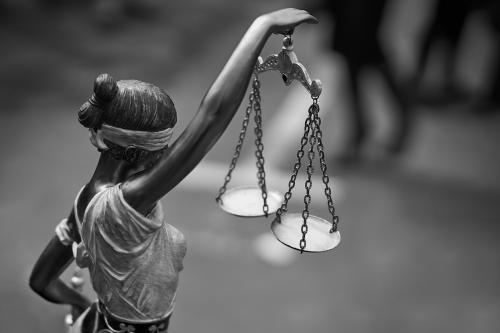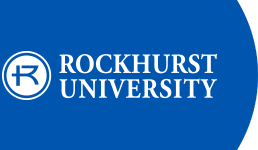Helzberg School of Management
Case Study: Profs Explore How to Do Right When Your Donor Does Wrong

Helzberg School of Management Professors Jennifer Rinella, Ed.D, and Tracy Blasdel, Ph.D., along with Katie Clune, Ph.D., of The College of Arts and Sciences recently authored an article titled “Controversial ‘Conversations’: Analyzing a Museum Director’s Strategic Alternatives When a Famous Donor Becomes Tainted” . The article was accepted for publication in the Journal of Nonprofit Education and Leadership. Below Jennifer Rinella, Ed.D, summarizes the case as it relates to ethical models and classroom instruction.
What happens when a prominent donor becomes tainted? This question is at the heart of this case involving the Smithsonian’s National Museum of African Art. A special exhibition on display as part of the Museum’s 50th anniversary celebration had suddenly become controversial. Camille and Bill Cosby, long-time friends of Museum director Johnnetta Cole, had loaned their personal collection of artwork and made a large donation for the special exhibition titled “Conversations: African and African American Artworks in Dialogue”. Soon after the exhibit opened, Bill Cosby was accused of multiple counts of sexual misconduct. The escalating scandal and criminal charges against Bill Cosby created a difficult situation for Dr. Cole as she weighed the cost of appearing to support her friends against the value of displaying one of the world’s largest private collections of African American art.
We found this case to be fascinating for several reasons. As women leaders in higher education, we are in awe of Dr. Cole and the path-breaking work she has done throughout her distinguished career; we wondered how she would strategically manage this situation. Secondly, as teachers, we constantly strive to find new, interesting ways to help students connect theory and practice as they prepare to lead people and programs in an ambiguous world. There were many underlying issues and layers in this case that make it adaptable for use – from discussions about conflicts of interest, to reviewing ethics standards and codes of conduct, to considering due diligence in prospect research and donor stewardship, and even developing crisis communication plans. Finally, we grew up watching the Cosby show and were aware of the Cosby family’s philanthropic leadership, so it was with trepidation that we observed this controversial situation unfolding. Little did we know that soon a torrent of allegations would similarly besmirch a growing number of actors, comedians, politicians, and other public figures.
Developed from publicly available information, this case utilizes Dunn’s (2010) model for applying stakeholder theory to a tainted donor situation. According to Dunn, when a donor becomes tainted, an organization’s strategy is a function of three factors:
- the perceived degree of incongruence between the goals and nature of the organization and the actions of the benefactor that led to the scandal (legitimacy)
- the extent of coalescence on demands of multiple stakeholder groups (power), and
- the perceived visibility and timeliness of the scandal (urgency).
Studying the case offers an opportunity for readers to apply this theoretical model for decision making to a real-life situation. Testing the case in the classroom enabled us to challenge students to identify conflicting stakeholder interests, evaluate the range of options available to the Museum director in this situation, and determine the most appropriate response. Students reported that they enjoyed the challenge of grappling with these issues, and many shared that they continued reflecting on the case for weeks afterward. Although students may have arrived at different conclusions, they were able to apply their learning and justify their strategic decisions through this process as they put themselves in Dr. Cole’s position. In the epilogue to the case, we share Dr. Cole’s devastation by the allegations and revelations surrounding Bill Cosby and her ultimate decision regarding the remarkable works of art in the exhibit.
Every leader faces ethical challenges and dilemmas, and there are no easy answers in effective leadership. We wrote this piece to highlight the importance of creating an ethical culture within organizations and applying theoretical frameworks for strategic decision-making and risk management in controversial situations. As the role model for influencing behavior within an organization, the nonprofit CEO must ensure that constituents are in tune with the organization’s values, including a commitment to ethical behavior. By committing to open communication and transparency even during difficult times, leaders foster trust among stakeholders; through these courageous conversations, leaders carry their organizations through controversy and ensure that organizational mission, vision, and values drive their work for the greater good.
Jennifer Rinella, Ed.D., Assistant Professor of Nonprofit Leadership









